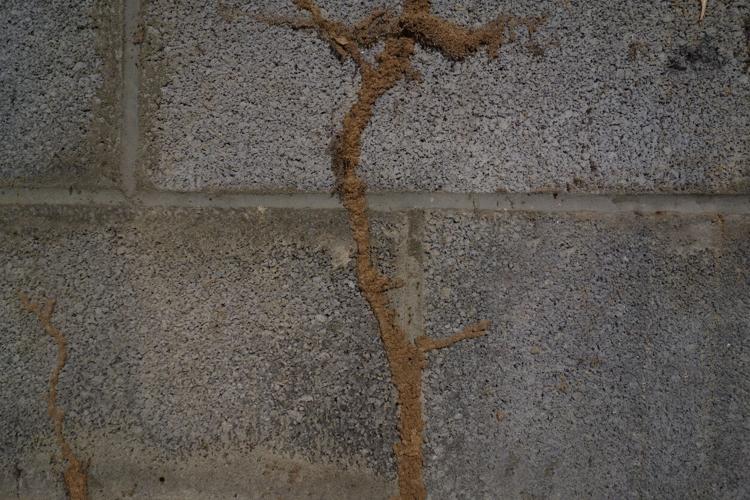As we move into fall, the pests around our home are also on the move. While pests are always looking for a food source, they also seek different living conditions in different seasons.
Prevention
The best tool in your prevention arsenal is awareness. Look around your home to detect any changes. You can be looking for anything from new, small dirt disturbances to specific piles of wood or plant particles, and the pests themselves.
The fall season will see rodents and roaches looking to find warmth and food inside your home. Spring brings a different set of critters.
We reached out to Nate Wolf, a Rosie-certified Partner and owner of Blue-Sky Pest Control, for some advice and insight regarding new procedures for controlling the pest population.
But first, let’s look at what steps you should be taking for true pest control, i.e., keeping the bugs out.
People are also reading…
There are all types of bait traps and mechanical traps available for purchase at your local hardware store. These are not preventative treatments, though. We use these products after we notice the pest in or around our homes. Generally, mouse traps, roach hotels, or deterrents like sprays are used to conquer pests that have already invaded.
Prevention is designed to keep the bugs and rodents away before they invade.
1. With no visible pest signs, Nate suggests a quarterly visit by your pest control company. A pest control spray is typically applied, and after it dries (less than one hour typically), the area is safe for you, children and pets. It is not so safe for pests, though.
2. If you are in an area susceptible to more frequent visitors, or if you have noticed signs of them or the intruders themselves, you may need monthly or bimonthly treatments until the problem is handled.
We recommend the quarterly treatment option as it is relatively low-cost and effective for most applications.
Most common calls
Nate tells us that calls from homeowners encompass all forms of pests; the two most common calls they get are for ants and scorpions. Depending on the amount of infestation, the frequency of the remedy will vary, along with the products the pros use.
As we mentioned, there are a plethora of over-the-counter solutions available.
A Rosie caution: be sure you research the proper method of deployment as well as all the cautionary information about the various products. The effect they may have on you, your children, and your pets could potentially be dangerous.
Nate wants folks to know that there are some unseen pests called subterranean termites that are difficult to detect early on. We cautioned you to try to remove food sources to deter pests; however, when your home is the food source, that presents a problem.
If you live in an area prone to these pests (which is most of Arizona), you would do well to engage a professional pest service to inspect your home annually.
Another common pest in the Phoenix Valley area is roof rats. Nate practices pest control in Phoenix and in Tucson, and while not prevalent here yet, they are coming. You will already see these nasty, damaging pests in several Northern Arizona areas as well.
What is new in the world of remedies?
Most ongoing pest prevention systems engage a liquid spray around the perimeter of your home and at the base of interior walls. The formulas change a little over time, but not by much.
The big changes have been in treating termites and roof rats.
Termites
1. Treatment in the ’90s was typically with bait systems. The hope was that the termites would find the bait more attractive than your home. This met with marginal success.
2. Termidor is a product developed in the early 2000s. This improved termite treatment, but it was still not as effective as people like Nate wanted to see.
3. In 2010, Dow Chemical came out with a product that is proving to be very effective and less costly. CENTRICON is a system where cellulose rods are driven into the ground very close to your house, a few feet apart. The rods are examined annually and replaced if necessary. The treatment effectively prevents the termites from molting, which they need to do to grow. Nate tells us this method is more environmentally sound, having won the EPA’s Green Chemical Award.
The key here is placement close to the home. If that is not possible, then more traditional spray techniques are employed.
Roof rats
1. These wary characters can cause tremendous damage if not controlled. They use insulation to build nests, and their waste destroys the effectiveness of the insulation. They eat through the flexible coating of electrical wires and ductwork. We took a quick dive into new and effective ways to deal with these pests.
2. Rat birth control is the newer kid on the market. By temporarily rendering the rodents infertile, both male and female, the ability to reproduce effectively destroys the infestation.
3. This is considered a more humane method as opposed to bait and trap.
There are two products manufactured by a company called SENESTECH that have developed liquid and solid products, Contrapest and Evolve. The company has DIY deployment systems that are safe and simple to use. Both systems can be deployed indoors and outdoors.
Staying on top of our pest control processes is about the most important step you can take. Often, a combination of each of us paying attention, professional ongoing maintenance, and some DIY setting of a mouse trap will keep our house, home, castle, or Cabin pest-free.
Join Rosie on the House every Saturday morning 8-11 on KTAR 92.3 FM and KNST 790 AM from 10-11 a.m.
Do you have questions about your house, home, castle or cabin? Reach us by phone at 1-888-767-4348 or email info@rosieonthehouse.com. Follow us on Facebook, YouTube, and Instagram.









